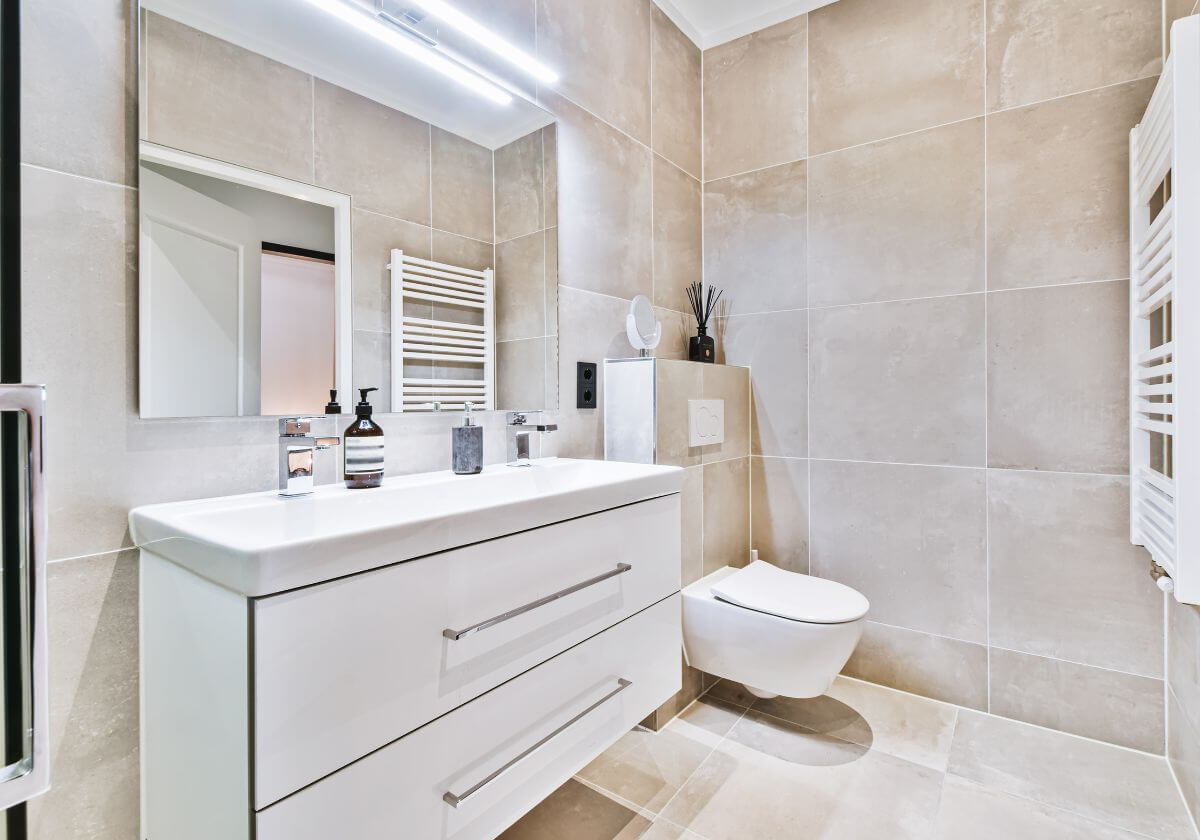A pinkish-slimy substance that occasionally appears in the damp areas of people’s
homes is a source of concern for many. The most common places they find it are in pet water dishes, tile floors,
shower and bathtub enclosure surfaces, and toilet bowls.
What do they consist of? Why is there pink mold in your house? How should I handle
it? For the answers, continue reading. We will explain what “pink mold” is and how to stay away from it.
What Is Pink Mold?
It’s not mold that is growing in your home - it’s bacteria.
Serratia marcescens
bacteria are usually the cause of this pink discoloration. The pigment known as prodigiosin, which they produce,
causes stains on your shower walls, faucets, and bathroom curtains. It can appear in pink, orange, and red hues.
Even though this bacterium is common and usually doesn’t pose the same health risks
as
black
mold , you should still take precautions to stop its growth in your bathroom. As long as it doesn’t
enter the body, contact with Serratia marcescens during washing or cleaning is generally safe for healthy people
(be careful not to touch the eyes or open cuts with contaminated hands).
However, Serratia marcescens may cause problems and infections if you have pets or
if you or anyone else in your home has a weakened immune system. It is imperative to address
bathroom
bacteria as soon as you notice their accumulation because of this risk.
Break Down the Serratia Marcescens
The bacteria Serratia marcescens, which has red or pink pigmentation, is the most
frequent cause of this pink slime. Dust, soil, surface waters, and the excrement of humans and other animals are
just a few of the locations where Serratia bacteria are common in our surroundings.
Any moist area where materials containing phosphorous or fatty substances
accumulate will see the growth of the bacteria. Soap residues in bathrooms, human waste in toilets, and food and
soap residues in pet water bowls are some of the sources of these substances.
After renovations or new construction, the pinkish film frequently surfaces. Some
have mentioned that the pink mold happens during a season when they spend most of the day with their windows
open.
How to Deal with the Pink Mold?
Pink mold in the shower may not be harmful to most healthy people when it comes
into short contact, but if it gets into the eyes or cuts, it can cause issues like bladder and
urinary
infections , especially in those with weakened immune systems. Cleaning this
biofilm as soon as
possible is advisable to be safe and stop bacterial growth.
The pigment of shower bacteria causes pink mold, which has a distinct
pink-to-reddish hue that makes it easy to remove. You may effectively remove pink mold from a variety of
surfaces, such as the shower, walls, floors, and curtains, and keep it from coming back by using common cleaning
supplies and adhering to the instructions provided.
Maintaining a dry shower is a challenging task. Try turning on your bathroom fan
while you take a shower if you have one to prevent too much humidity from building up. After using the shower,
try to dry the damp areas with a towel or squeegee. You can also use your washer to quickly remove Serratia
marcescens from your shower curtain. To prevent any unintentional damage, make sure to first check the label on
the curtain.
Ways to Stop Pink Mold from Resurfacing
Here are some tips to prevent pink mold from returning to your bathroom after you
have already removed it:
Make sure your bathroom stays as dry as possible first and foremost. Using an
exhaust fan both during and after a shower will help achieve this. If you have a fan, turn it on before you take
a shower and leave it running for at least twenty minutes afterward.
Second, after every use, develop the habit of cleaning the shower’s walls and any
curtains. By doing this, you’ll be able to get rid of excess moisture and humidity, which serve as bacteria’s
breeding grounds.
Additionally, think about utilizing antimicrobial bathmats and shower curtain
liners. Because of their unique design, these products are resistant to the stains and smells that bacteria can
produce over time.
Finally, you must keep up a consistent cleaning schedule for your bathroom.
Maintaining a clean bathroom will help keep mold from growing back and guarantee that the area is still healthy.
Take Action Now
Spotting pink mold in your home should be a prompt red flag to take action.
Exposure to the bacterium Serratia marcescens poses risks to household members, with children and seniors being
particularly vulnerable. To safeguard your family’s health for the future, it’s crucial to address this concern
without delay.

















































































































